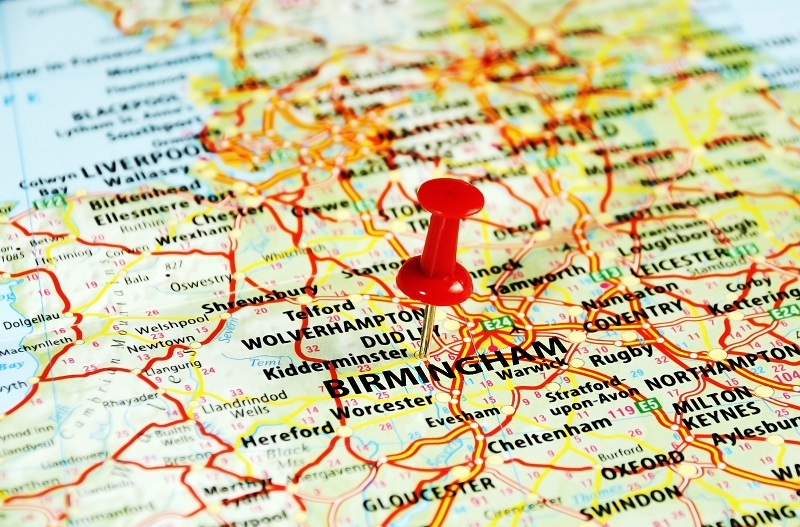The ultimate guide to radiant and robust hydrangeas
Posted on 01/07/2025
The Ultimate Guide to Radiant and Robust Hydrangeas
Hydrangeas are beloved garden favorites, known for their lush foliage and stunning, globe-shaped blooms in a rainbow of colors. These versatile shrubs steal the spotlight from early summer through autumn, lending their vivid beauty to landscapes and bouquets alike. Whether you're cultivating your first hydrangea or looking to elevate your existing collection, this ultimate guide will arm you with everything you need for vibrant, healthy hydrangeas that flourish season after season.

Understanding Hydrangeas: An Overview
Radiant hydrangeas are more than just eye-catching flowers--they are a testament to horticultural diversity and adaptability. Native to Asia and the Americas, hydrangea varieties come in multiple shapes, sizes, and colors, making them one of the most rewarding flowering shrubs to grow.
Types of Hydrangeas
There are over 75 hydrangea species worldwide, but a few varieties dominate in home gardens:
- Bigleaf Hydrangea (Hydrangea macrophylla): Renowned for their large mophead and lacecap blooms, with colors affected by soil pH.
- Panicled Hydrangea (Hydrangea paniculata): Hardy and sun-tolerant, boasting conical white or pink blooms that mature to bronze or red.
- Smooth Hydrangea (Hydrangea arborescens): North American native, featuring round, creamy-white blossoms like the popular 'Annabelle'.
- Oakleaf Hydrangea (Hydrangea quercifolia): Recognized for lobed foliage that turns fiery red in fall, and elongated white flower clusters.
- Climbing Hydrangea (Hydrangea anomala subsp. petiolaris): A unique vine variety that climbs walls and trellises, producing lacy white blooms.
Understanding your hydrangea's type is key for optimal growth and achieving the most robust hydrangea blooms.
Optimal Growing Conditions for Lush Hydrangeas
Achieving those showstopping radiant hydrangea flowers comes down to three pillars: light, soil, and water.
Hydrangea Light Requirements
- Most hydrangeas thrive in morning sun and afternoon shade.
- Panicled hydrangeas tolerate more sun--up to full sun in cooler climates.
- Excessive shade can result in leggy plants and reduced blooms.
Soil Essentials for Vibrant Hydrangea Plants
- Rich, well-draining soil is crucial.
- Amend heavy clay with organic compost for aeration and fertile nutrients.
- Keep the soil consistently moist but never soggy to preserve hydrangea roots' health.
Watering for Healthy Hydrangea Growth
- Hydrangeas demand ample water, especially during the first two years.
- Water deeply 1-2 times per week, more often in drought or heat.
- Mulch 2-3 inches to conserve moisture and keep roots cool.
Planting Hydrangeas for Lasting Beauty
Choosing the Perfect Site
Your radiant hydrangea's journey starts with choosing the right planting location. Aim for a spot that offers protection from harsh midday sun and strong winds, while receiving at least 4-6 hours of daylight.
How to Plant Hydrangeas
- Dig a wide hole: Twice as wide as the root ball, just as deep.
- Amend soil: Mix in compost or leaf mold for fertility and drainage.
- Set the plant: Hydrangea's crown should sit at soil level, not buried.
- Backfill and water: Firm the soil and water deeply to settle roots.
- Mulch: Add organic mulch for weed suppression and moisture retention.
Early spring or autumn are the best seasons for planting, ensuring your hydrangeas get established before extreme weather arrives.
How to Fertilize Hydrangeas for Maximum Impact
To encourage robust hydrangea growth, feed your shrubs with the right nutrients at the right time.
- Apply a balanced, slow-release fertilizer in early spring as new growth emerges.
- Avoid high-nitrogen feeds which favor leaves over flowers.
- Bigleaf hydrangeas may benefit from a second feed in mid-summer for extra blooms.
- In alkaline soils, add aluminum sulfate to enhance blue hydrangea blooms.
Tip: Over-fertilization can scorch leaves and reduce bloom count. Follow manufacturer instructions and remember, sometimes less is more!
The Secret to Changing Hydrangea Flower Color
One of the most magical attributes of hydrangeas, particularly bigleaf hydrangeas, is their ability to change color based on soil pH:
- Acidic soil (pH below 6.0): Produces blue or purple hydrangea flowers.
- Neutral to alkaline soil (pH above 7.0): Yields pink or red blooms.
- White-flowered hydrangeas do not change color based on soil pH.
How to Adjust Soil pH
- For blue blooms: Add aluminum sulfate or sulfur to lower soil pH.
- For pink blooms: Mix in garden lime to raise the pH.
- Always test soil before amending, and adjust gradually over time.
Patience is essential; it may take one or two blooming seasons to see dramatic shifts in your vibrant hydrangea's flower color.
Pruning Hydrangeas for Structure and Abundant Blooms
Pruning is crucial to maintain healthy, radiant hydrangeas and maximize their flower production. However, hydrangea varieties have different pruning needs.
When to Prune Hydrangeas
- Bigleaf and oakleaf hydrangeas: Prune just after flowering in summer. These varieties bloom on old wood--removing stems too late will cut off next year's flowers.
- Smooth and panicled hydrangeas: Prune in late winter or early spring before new growth. They bloom on new wood, so annual cutting improves flowering.
- Climbing hydrangeas: Only prune to remove dead or tangled stems.
How to Prune Hydrangeas
- Use clean, sharp pruners to prevent disease transfer.
- Start by removing any dead, damaged, or diseased wood.
- Thin out oldest stems at the base to encourage air circulation and new growth.
- Shape the shrub for symmetry, but don't over-prune--this can limit flower potential.
Proper pruning leads to a more manageable, robust hydrangea shrub loaded with dazzling blooms.
Hydrangea Pests and Problems: Diagnosis and Solutions
Even the healthiest hydrangeas can encounter challenges. Being proactive is the key to preserving those vibrant hydrangea flowers.
Common Hydrangea Pests
- Aphids: Cause distorted leaves and sticky residue; blast with water or use insecticidal soap.
- Spider mites: Lead to stippling or webbing; increase humidity and apply neem oil if needed.
- Slugs and snails: Target young leaves; use crushed eggshells or natural slug pellets as deterrents.
Diseases Affecting Hydrangeas
- Powdery mildew: White powder on leaves--improve air circulation and use a fungicide if severe.
- Leaf spot: Tan or brown spots caused by fungi. Remove affected leaves and avoid overhead watering.
- Root rot: From overly wet soil. Ensure proper drainage and don't overwater.
Tip: Healthy hydrangeas are naturally resilient--keep them well-fed, spaced, and watered to minimize issues.
Hydrangea Care Through the Seasons
Sustaining your radiant hydrangeas in every season ensures many years of reliable blooms:
Spring
- Fertilize as new growth appears.
- Check for winter damage and prune as needed.
- Refresh mulch to conserve moisture.
Summer
- Water deeply in dry spells.
- Deadhead spent flowers for continued display.
- Monitor for pests and diseases.
Autumn
- Cease fertilizing late summer to allow plants to harden off.
- Leave faded blooms to add winter interest and protect buds.
- Water well before soils freeze in colder regions.
Winter
- Mulch roots with straw or leaves in cold climates.
- Wrap young or exposed plants in burlap for protection.
- Avoid pruning bigleaf hydrangeas during winter months.
Propagation: Growing Your Hydrangea Collection
Expanding your garden's hydrangea palette is easy and cost-effective with propagation.
How to Propagate Hydrangeas from Cuttings
- In early summer, snip a 4-6 inch stem from non-flowering growth.
- Remove lower leaves and dip the cut end in rooting hormone.
- Plant in moist potting mix, cover with a clear plastic bag, and place in filtered light.
- Keep soil moist. Roots should form in 2-4 weeks.
- Transplant new hydrangea plants once established.
This process allows you to share your favorite robust hydrangeas with friends or fill your landscape for a fraction of nursery costs.
Frequently Asked Questions About Hydrangea Care
Why Isn't My Hydrangea Blooming?
Common causes include:
- Pruning at the wrong time, cutting off bloom buds.
- Not enough sunlight.
- Excess nitrogen fertilizer promoting leaf over flower growth.
Can Hydrangeas Be Grown in Pots?
Absolutely! Choose a large container with drainage holes, fill with rich potting soil, and water regularly--potted hydrangeas may need daily summer watering.
How Long Do Hydrangeas Live?
With proper care, many hydrangea varieties can live 50 years or more, becoming robust, enduring features in the garden landscape.

Design Tips: Showcasing Radiant Hydrangeas in Your Landscape
- Let hydrangea bushes shine as foundation plantings or hedges.
- Pair hydrangeas with ferns, hostas, and evergreens for dynamic contrast.
- Accent shady woodland gardens with white or blue hydrangea varieties.
- Plant dwarf hydrangeas in containers for patios and small spaces.
- Use dried hydrangea blooms for long-lasting indoor arrangements.
Conclusion: Achieving Robust and Radiant Hydrangeas Year After Year
Creating a garden bursting with radiant and robust hydrangeas is deeply rewarding. With their captivating blooms, impressive longevity, and adaptable beauty, hydrangeas truly are the ultimate garden classic. By understanding their care requirements, adjusting for your climate, and following these expert tips, you can enjoy a thriving oasis of color, texture, and vibrancy in your landscape for decades to come.
Ready to nurture your most radiant hydrangeas ever? Embrace these best practices and watch your garden become a haven of lush, flourishing hydrangea plants--year after dazzling year.







